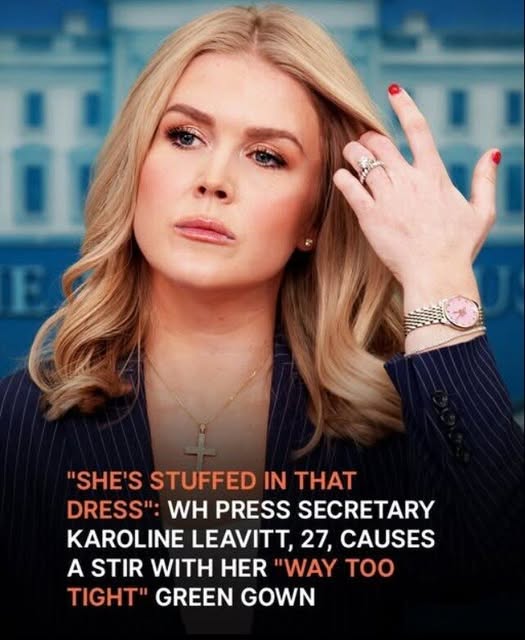Karoline Leavitt’s Tight-Fitting Dress at White House Press Gaggle Sparks Widespread Debate
On March 31, 2025, White House Press Secretary Karoline Leavitt unexpectedly became the center of public attention—not for policy remarks, but for her choice of attire during a press briefing on the North Lawn. Her ankle-length green dress, featuring a bold knee-high slit and a form-fitting silhouette, quickly ignited a flurry of reactions across social media, news outlets, and political commentary forums.
Leavitt, known for bringing a youthful and contemporary style to the traditionally formal role, stepped into the spotlight wearing the striking green ensemble paired with brown heels. The vivid color and daring cut contrasted with the usual somber tones and conservative styles typically seen at official White House events.
Almost immediately after her appearance, photos and video clips circulated online, triggering waves of criticism. Many detractors focused on the fit of the dress, describing it as overly tight and unflattering. One blunt comment read, “She’s stuffed in that dress,” while others suggested the outfit was worn incorrectly or simply did not suit the occasion. Criticism centered less on the dress’s color or design and more on its tailoring and appropriateness for a professional setting.
The conversation quickly veered into broader debates about gender expectations in politics. Critics argued that the dress’s high slit and snug fit diminished the gravitas of Leavitt’s role, transforming a serious briefing into a distraction over appearance. This scrutiny, many observers noted, reflects an enduring double standard faced by women in political leadership—where fashion choices are dissected in ways rarely applied to their male counterparts, whose clothing often goes unquestioned.
Supporters of Leavitt pushed back against what they viewed as an unfair focus on style over substance. They pointed out that male politicians rarely endure comparable public commentary on their attire, even when wearing the same suit for years. For them, the uproar over Leavitt’s dress epitomizes outdated societal norms dictating how women “should” present themselves professionally and the narrow bounds of acceptable personal expression in politics.
Ultimately, what began as a routine White House press event morphed into a flashpoint over gender, image, and public perception. Karoline Leavitt’s green dress became a symbol of the complex challenges female political figures face when navigating visibility and personal expression amid heightened scrutiny. Whether viewed as a minor fashion misstep or an emblem of persistent double standards, the incident underscored the delicate balance women in power must strike between individuality and public expectation.

